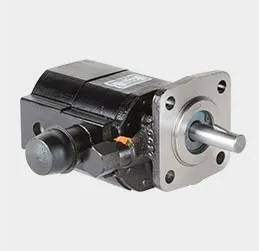high quality investment casting
High-Quality Investment Casting A Comprehensive Overview
Investment casting, also known as lost-wax casting, is an advanced manufacturing process widely recognized for its ability to produce intricate and high-precision components. Renowned across various industries, including aerospace, automotive, and medical, high-quality investment casting is indispensable for meeting the stringent demands of modern engineering and production standards. This article delves into the intricacies of investment casting, its benefits, applications, and the emerging technologies shaping its future.
Understanding Investment Casting
The investment casting process begins with creating a pattern, typically made of wax, that replicates the desired part's geometry. This pattern is coated with a ceramic shell, which when heated, melts away the wax, leaving behind a hollow mold. The molten metal is then poured into this mold, allowing for complex shapes and fine details that are often unattainable through traditional casting methods. After the metal solidifies, the ceramic shell is broken away, yielding a high-quality finished component.
Unmatched Precision and Complexity
One of the most significant advantages of high-quality investment casting is its ability to produce highly detailed and complex geometries. The strength of the materials used, combined with the precision of the mold, enables the creation of intricate parts with tight tolerances. This capability is particularly advantageous in industries like aerospace and medical devices, where even the slightest deviation from specifications can lead to significant safety concerns or operational inefficiencies.
Material Versatility
Investment casting is compatible with a variety of metals, including stainless steel, aluminum, copper alloys, and even certain superalloys. This versatility allows manufacturers to select materials tailored to specific performance requirements, whether it's corrosion resistance, weight reduction, or high-temperature performance. By using advanced alloys, companies can produce components that withstand extreme environments, making investment casting an optimal choice for critical applications.
Cost-Effectiveness in Production
high quality investment casting

While the initial setup costs for investment casting can be higher than those for other casting methods, the long-term benefits often justify the investment. The process minimizes material waste, as excess metal is typically recycled. Furthermore, because investment casting produces parts with superior surface finishes, secondary operations (like machining) are often reduced or eliminated entirely. This efficiency translates to lower overall production costs, particularly in large-scale manufacturing.
Quality Assurance and Standards
In industries where precision is non-negotiable, quality assurance is paramount. High-quality investment casting facilities adhere to rigorous standards such as ISO 9001, ensuring that every component is produced consistently and meets specified performance criteria. Advanced inspection techniques, including X-ray and ultrasonic testing, are often employed to detect any potential issues before components are delivered to clients.
Future Trends in Investment Casting
As technology progresses, the investment casting industry is witnessing significant innovations. The incorporation of advanced manufacturing techniques, such as 3D printing for pattern creation, is allowing for even greater flexibility in design and production efficiency. Moreover, the integration of automation and digital technologies in the production process enhances accuracy and reduces lead times.
In addition, there is a growing emphasis on sustainable practices in manufacturing. Investment casting companies are increasingly exploring eco-friendly materials and processes, reducing their carbon footprint and meeting regulatory demands for sustainability.
Conclusion
High-quality investment casting stands at the forefront of modern manufacturing technologies, offering unparalleled precision, material versatility, and cost-effectiveness. As industries continue to evolve, the demand for complex, high-performance components will only increase. By embracing innovation and maintaining strict quality standards, investment casting will remain a pivotal process across various sectors, ensuring that manufacturers can meet the challenges of tomorrow's engineering demands with confidence.
-
Aluminium Pressure Die Casting High-Precision & Durable Solutions for Complex PartsNewsJul.08,2025
-
Top Aluminum Sand Castings Manufacturer – Precision Green Sand Castings for Industrial NeedsNewsJul.08,2025
-
Precision Lost Wax Casting Quotes – High Accuracy Custom Parts Lost Wax Precision Casting ServicesNewsJul.07,2025
-
High-Quality Sand Used for Casting - Superior Sand for Sand Casting ProcessesNewsJul.07,2025
-
China Supply High End Metal Stamping Parts Sino - Precision Manufacturing FactoryNewsJul.06,2025
-
High-Quality Automotive Investment Casting Services Precision & Sand Casting SolutionsNewsJul.06,2025















